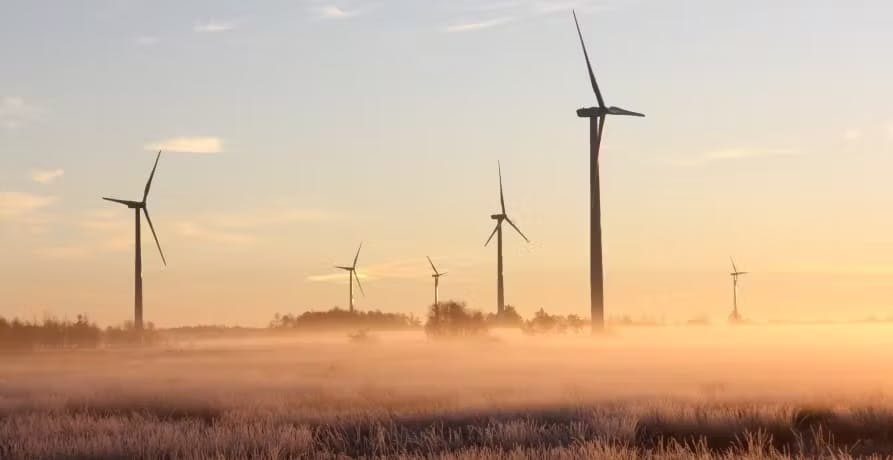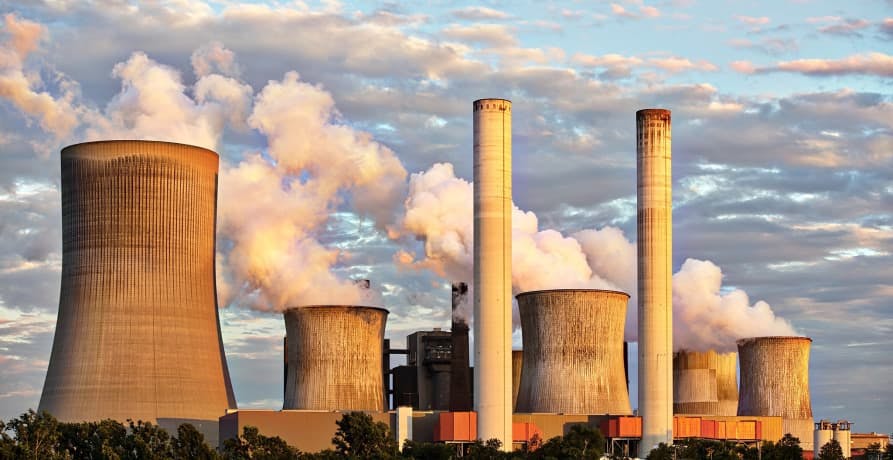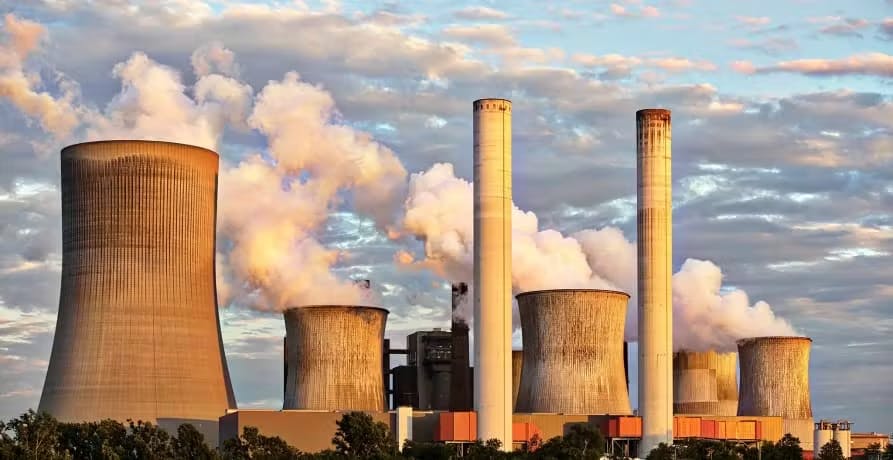
California Climate Accountability Package: SB253, SB261, & SB252
What is the California Climate Accountability Package, and how do SB 253 and SB 261 (SB 219), and SB 252 help the state work towards their environmental goals?
ESG / CSR
Industries



The journey towards net zero emissions and enhanced environmental responsibility is pivotal for businesses today. As businesses move closer to becoming environmentally conscious entities, grasping the role of carbon offsets can be invaluable. This guide aims to shed light on the intricacies of carbon offsets, detailing their benefits, potential challenges, and how they fit into a company's larger sustainability picture.
What is a carbon offset? How do they differ from carbon credits? And why should a company invest in a carbon offsetting project?
Carbon offsets represent a proactive approach to counterbalance one's carbon footprint. By purchasing or investing in these offsets, individuals or companies effectively support environmental projects aimed at reducing greenhouse gas emissions.
These vital projects predominantly occur in developing nations, serving a dual purpose: they not only curb carbon emissions but also promote sustainable and eco-friendly practices within these communities.
You might have heard the terms 'carbon offset project' and 'carbon offset credits' used interchangeably. But are they truly identical in meaning and function? Let's delve deeper.
To learn more about carbon emissions head over to our article on the topic.
Carbon credits symbolize a commitment to the environment. Each credit represents a specific amount of carbon dioxide removed from the atmosphere, offsetting a pre-existing carbon footprint. It's essential to note that these credits only counteract the greenhouse gases that have already been emitted.
On the other hand, a carbon offset is a mechanism adopted by companies to financially support environmental initiatives as a way to balance out the impact of their emissions. This should be considered only after efforts to directly reduce emissions have been made.
To put this into perspective, let's consider a consulting firm that frequently requires overseas travel to meet clients. The first step for such a firm should be to evaluate whether these trips are essential. Can the objectives be achieved through video conferencing for example? This approach not only reduces the carbon footprint but also aligns with a more sustainable and responsible business practice.
For those unavoidable trips, the firm can adopt a carbon-offsetting approach. For example, each time their consultants need to fly, the company could invest in environmental initiatives like reforestation or renewable energy projects. This action helps to offset the carbon emissions from their air travel. It's a way to balance out the impact of those essential flights. However, it's important to remember that the primary goal should always be to reduce emissions at the source whenever possible.
Take a look at our article on carbon footprints to learn more about what this is, and how it is calculated.
Carbon offsetting is a mechanism by which companies or individuals counteract their carbon emissions by financially supporting projects that benefit the environment. Essentially, it's an investment in initiatives that reduce or capture an equivalent amount of carbon dioxide or other greenhouse gases from the atmosphere.
Often, this involves partnering with a specialised organisation or broker that facilitates these environmental projects, possibly in remote parts of the world. The process starts with determining one's carbon footprint – the total emissions caused by their activities. Based on this assessment, the chosen environmental organisation suggests a contribution amount proportional to the emissions generated.
By funding these projects, either partially or in full, companies and individuals effectively ‘offset’ their prior carbon emissions, aligning their actions with environmental responsibility.
Considering carbon offsetting? There are several types of projects you can invest in. Let's delve into the four primary categories of carbon offset initiatives.
Reforestation and conservation stand out as favored carbon offsetting strategies. These projects have global relevance and are conveniently executed in various regions. A notable advantage is the straightforward calculation linking the number of trees planted to the carbon footprint intended to be offset by a company.
While forestry and conservation initiatives may not always be the most cost-effective option, they offer significant value. Beyond carbon sequestration, these projects underscore the preservation of ecosystems and wildlife. Such endeavors allow companies to showcase their dedication to corporate sustainability and social responsibility.


Another prominent approach to carbon offsetting is investing in renewable energy. By supporting projects that harness solar, wind, or hydropower globally, individuals and businesses play an instrumental role in advancing clean energy solutions.
By funding these renewable energy sources, not only is there a reduction in the reliance on environmentally harmful fossil fuels, but there's also a boost to local economies. Investing in such projects helps generate employment opportunities and paves the way for a sustainable energy future.


Another avenue for carbon offsetting involves supporting community projects that introduce energy-efficient methods and technologies to developing nations.
Such initiatives foster sustainability in these regions, setting them on a trajectory away from poverty. Hence, carbon credits or offsets do more than just benefit the environment. They also empower economically challenged communities, paving the way for a brighter, more prosperous future for their inhabitants


The fourth most common carbon offsetting project is a “waste to energy” project. This means turning methane, landfill gas, agricultural waste, or other typically harmful substances into usable electricity.
Touted as one of the most ingenious solutions, energy efficiency from such projects not only addresses greenhouse gas emissions but also offers dual benefits. Much like community-based initiatives, waste-to-energy projects positively impact both the environment and the broader community.
To learn more about carbon offsetting and removal why not check out our article.
Carbon offsetting serves as a valuable mechanism in our fight for environmental protection. However, its primary function to counteract existing carbon footprints underscores a more pressing issue: the substantial greenhouse gas emissions produced by both individuals and corporations.
While offsetting plays its part, true environmental stewardship hinges on proactive measures to prevent pollution from the outset. Yet, with global warming already taking its toll, companies must now walk a dual path. Not only must they commit to curbing emissions, but they also need to strategically invest in carbon offsets to combat the entrenched effects of environmental damage.
Recognizing the need for both emission reductions and carbon offsets brings us to the following question: since both are integral components of a comprehensive environmental strategy, what are the specific benefits and potential pitfalls of investing in carbon offset projects?
While the ultimate objective for companies and individuals should be to substantially reduce their carbon emissions, it's essential to acknowledge that such reductions alone aren't enough. Existing carbon emissions have already caused significant environmental damage, and this underscores the importance of carbon offsetting.
Specific benefits of carbon offsetting projects include:
While carbon offsetting presents an appealing solution for businesses seeking to mitigate their environmental impact, it's essential to recognise its limitations. At its core, offsetting does not reverse the existing environmental damage or negate the ongoing contributions to global warming. Relying solely on offsetting projects, such as tree planting or carbon sequestration systems, cannot counteract the emissions already in the atmosphere from fossil fuels, methane, and other greenhouse gases.
Top environmental entities, including the Environmental Protection Agency and the Paris Climate Agreement, agree that while offsets play a role, they shouldn't overshadow the broader objective: achieving genuine carbon neutrality and reducing emissions at their source. The emphasis should be on a holistic approach, combining both preventative measures and offsets, to address the multifaceted challenges of climate change.
Let’s take a closer look at some of the main criticisms of carbon offsets:
Companies should consider utilizing carbon offsets as part of a broader, holistic approach to environmental responsibility. While carbon offsets do not reverse or halt previous or current carbon emissions, they undeniably offer positive environmental contributions. They support various emission reductions, such as the curbing of greenhouse gases, and help promote the idea of a carbon-neutral business. Nevertheless, the use of carbon offsets should not be a company's initial or sole action towards environmental sustainability.
Before diving into carbon offsets, a company should first prioritize establishing a robust Environmental Management Plan (EMP). This plan should outline strategies for reducing emissions at their source, improving energy efficiency, and incorporating renewable resources, among other sustainable practices. Once this plan is in place and demonstrates tangible effectiveness, carbon offsets can then be seen as a supplementary tool.
To effectively reduce emissions, a company needs a clear understanding of current greenhouse gas emissions.
Transitioning to carbon-neutral and actively combating climate change demands quantifiable data and clear targets. Put simply, it's easier to reduce your carbon footprint when you have a precise measure of your current emissions, rather than a vague commitment to "be greener."
By assessing your carbon footprint accurately, you can establish specific reduction targets, monitor your progress, and upon achieving these goals, set even more ambitious environmental milestones.
Carbon offsets are not a replacement for proactive steps businesses should take to mitigate activities that result in substantial carbon footprints. Relying solely on offsets, while continuing to emit greenhouse gases like nitrous oxide, methane, and other pollutants, lacks a genuine commitment to carbon reduction.
Each business operates uniquely, but there are myriad daily actions both you and your company can undertake within your local communities. These actions can significantly reduce greenhouse gas emissions and contribute to combating climate change, without necessarily investing in offset projects or purchasing offset credits.
Take the time to devise impactful, even if incremental, strategies to genuinely address GHG emissions and contribute to a healthier climate.
After assessing your carbon footprint and crafting a strategy for your company's climate change mitigation efforts, you can then explore opportunities in renewable energy projects and emissions reduction through carbon offset initiatives.
Before delving into carbon offsets or voluntary offset contributions, your company should prioritize and detail specific actions aimed at reducing its own carbon emissions. Institutions like the Environmental Protection Agency can guide businesses in assessing their energy consumption, pinpointing critical areas for emission reductions, and minimizing their overall impact on climate change.
So, how should your company proceed to effectively reduce emissions, including carbon dioxide and other greenhouse gases?
Begin by estimating the budget required to offset your CO2 emissions, aiming for carbon neutrality as a milestone in combating climate change. Consider money as a tool; prioritize its use to diminish your company's direct carbon footprints before channeling it to external environmental initiatives.
Next, select a portfolio resonating with your business goals and aspirations. While all carbon offset projects contribute positively, aligning with a project that mirrors your company's mission fosters a deeper connection with your team, customers, and the broader community.
Lastly, communicate your allegiance to the chosen carbon offset project transparently. It's vital to illustrate how your chosen initiative complements your company's overarching vision and its commitment to countering climate change.


At Greenly we can help you to assess your company’s carbon footprint, and then give you the tools you need to cut down on emissions. Why not request a free demo with one of our experts - no obligation or commitment required.
If reading this article has inspired you to consider your company’s own carbon footprint, Greenly can help. Learn more about Greenly’s carbon management platform here.